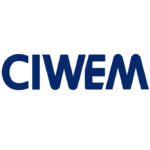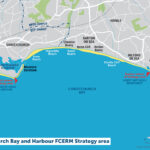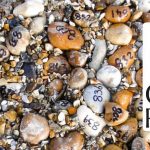 Andy Bradbury, who died suddenly on 6 August 2014, was well known to many UK coastal engineers as Director of the Channel Coastal Observatory based at the National Oceanography Centre in Southampton, Visiting Professor in Engineering and Environment at University of Southampton, Head of the Coastal Group at New Forest District Council, Chairman of the Southern Coastal Group and technical advisor to SCOPAC.
Andy Bradbury, who died suddenly on 6 August 2014, was well known to many UK coastal engineers as Director of the Channel Coastal Observatory based at the National Oceanography Centre in Southampton, Visiting Professor in Engineering and Environment at University of Southampton, Head of the Coastal Group at New Forest District Council, Chairman of the Southern Coastal Group and technical advisor to SCOPAC.
He was elected Chairman of the Southern Coastal Group and technical advisor to SCOPAC in 2009. He was exceptional at taking technical detail on coastal engineering, management, policy and monitoring and making it palatable to all. During his time as chairman he was passionate about educating those new to the industry through training events. He was the main driving force behind the series of Southern Coastal Group and SCOPAC workshops titled, “A Problem Shared: The Nuts and Bolts of…” Each year, officers choose an engineering or coastal management topic of relevance, for which experienced coastal engineers and contractors are invited to share their in depth knowledge. In honour of his legacy, these workshops are now called “Andy’s workshops”. In addition, SCOPAC awards an annual £500 “Bradbury’s Bursary” to a University of Southampton ‘Engineering in the Coastal Environment’ student.
Andy was a leading engineer in his own right. He designed the Hurst Spit Stabilisation Scheme in 1996 which won the Institution of Civil Engineers Merit Award in 1997. The scheme has continued successfully to provide protection to the Western Solent since its completion.
Andy was an influential player within the UK coastal engineering community and served on the Institution of Engineers Coastal Engineering Advisory Panel. He was a member of numerous national steering groups, including the UK Coastal Monitoring and Forecasting and the Environment Agency’s Asset Management Theme Advisory Group.
His foresight and vision led to the development of a co-ordinated and consistent regional approach for coastal monitoring and data collection for the Southeast of England. He established the Channel Coastal Observatory in 2002 to deliver this Defra-funded programme. He was instrumental in the development of the National Network of Regional Coastal Monitoring Programmes, providing freely available data to all, which informs the design and management of England’s coastal protection and coastal flood defence schemes.
The most recent project instigated by Andy investigated the effects of bi-modal waves on gravel beaches. The wave modelling was undertaken at HR Wallingford, which is where Andy started his career in 1981 after graduating. The outputs from this study are of major importance to the design of coastal structures and improved storm forecasting across the SCOPAC coastline.
Andy’s insight, enthusiasm and expertise will be greatly missed by his many colleagues and friends, and by the UK Coastal Engineering profession as a whole.
Cllr Mary Penfold
SCOPAC Chairman
“I greatly valued Andy’s knowledge, wisdom and guidance both as a friend and colleague. He was indeed an inspiration, driving us all forward, respected by all who are involved in engineering and coastal management.
We will all miss him dreadfully. We must now build on his vision as an engineer and the legacy which he left us all.”
An update, January 2021:
‘Groynes in Coastal Engineering: A Guide to design, monitoring and maintenance of narrow footprint groynes’. Published by CIRIA (C793)
On its publication in May 2020, Jonathan Simm, co-author of CIRIA guide, Technical Director, HR Wallingford commented “This revision of the well-used CIRIA R119 report was the brainchild of the late Prof Andrew Bradbury, who had started to assemble a document on timber groyne maintenance before his untimely death. The author team believe that the result captures much of the spirit of what Andy intended, dealing not only with the design of groyne field layouts and profiles but also with materials, design, construction and beach and groyne maintenance aspects. It complements two classic CIRIA guides: the Beach Management Manual and the Rock Manual.”
More at Maintenance of coastal structures – Phase 1: Timber groynes







